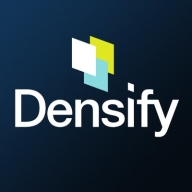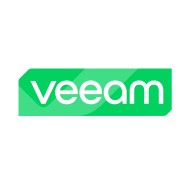

Densify and Veeam Data Platform compete in IT infrastructure management. Densify has an advantage with competitive pricing and superior customer support, while Veeam Data Platform is preferred for its broad features, making it a worthwhile investment despite higher costs.
Features: Densify optimizes cloud and container resources with predictive analytics enhancing cost efficiency. It helps in cost management with effective workload modeling and resource planning. The control console offers comprehensive visibility across multiple cloud accounts and on-premise resources. Veeam Data Platform excels in data protection with backup, recovery, and replication capabilities. Its instant recovery feature and seamless VM integration provide robust backup solutions. Veeam’s monitoring tools like Veeam ONE enhance performance tracking and issue detection.
Room for Improvement: Densify could expand its analytics features to include more detailed financial metrics and enhance its integration with business-critical applications. Improving the reporting customization for diverse business needs would be beneficial. Extending support for more hybrid environments would add value. Veeam Data Platform would benefit from streamlining its deployment complexity and enhancing initial setup clarity. Offering a more intuitive user interface could improve accessibility for non-technical users. Further integration with more cloud platforms would strengthen its market position.
Ease of Deployment and Customer Service: Densify is known for its straightforward deployment process, backed by exceptional customer service. This simplifies the transition phase for new users. Veeam Data Platform, while complex in setup, is supported by strong customer service, providing comprehensive assistance during deployment and operation phases.
Pricing and ROI: Densify offers a competitive pricing structure, yielding good ROI by efficiently optimizing resources. Its solutions are cost-effective, providing quick financial returns for resource management. Veeam Data Platform involves higher initial costs, but its advanced features assure value for money through long-term data protection benefits. It provides higher-value capabilities, appealing to businesses with a larger budget for comprehensive data management solutions.
| Product | Market Share (%) |
|---|---|
| Veeam Data Platform | 8.7% |
| Densify | 2.4% |
| Other | 88.9% |


| Company Size | Count |
|---|---|
| Small Business | 1 |
| Midsize Enterprise | 1 |
| Large Enterprise | 9 |
| Company Size | Count |
|---|---|
| Small Business | 216 |
| Midsize Enterprise | 99 |
| Large Enterprise | 138 |
Densify is a hybrid cloud and container resource management platform that makes workloads self-aware of their precise resource requirements and automates the resource management and selection process. This solution helps you control your cloud spend and also helps your apps perform and scale better. Densify enables you to match your cloud requirements with the optimal cloud supply. Additionally, Densify is the only technology that leverages patented, predictive machine learning-powered analytics to perform advanced modeling of workload patterns, and provide precise optimization directives. It is ideal for cloud engineers, container platform owners, and IT finance.
Densify works by:
Densify Features
Densify has many valuable key features. Some of the most useful ones include:
Densify Benefits
There are many benefits to implementing Densify. Some of the biggest advantages the solution offers include:
Veeam Data Platform is designed for modern data management, providing secure backups, intelligent data insights, and resilience. It ensures data is protected, recoverable, and manageable across complex environments, supporting business continuity effectively.
Veeam Data Platform stands out with its robust capabilities in data protection, orchestrated recovery, and efficient management. It offers a simple interface while ensuring data security and availability, which is critical for businesses. The platform's compatibility with virtual machines, databases, and applications across VMware, Hyper-V, and cloud environments makes it a versatile choice for backup and disaster recovery strategies. Users gain confidence from its performance, from secure backups to facilitating effective infrastructure monitoring.
What are the key features of Veeam Data Platform?Veeam Data Platform is widely implemented by industries needing robust disaster recovery plans and data management solutions. It is particularly valuable in environments utilizing hybrid cloud solutions, protecting mission-critical workloads, and ensuring business continuity. Businesses leverage its capabilities to safeguard data integrity and facilitate long-term retention through efficient infrastructure management.
We monitor all Virtualization Management Tools reviews to prevent fraudulent reviews and keep review quality high. We do not post reviews by company employees or direct competitors. We validate each review for authenticity via cross-reference with LinkedIn, and personal follow-up with the reviewer when necessary.